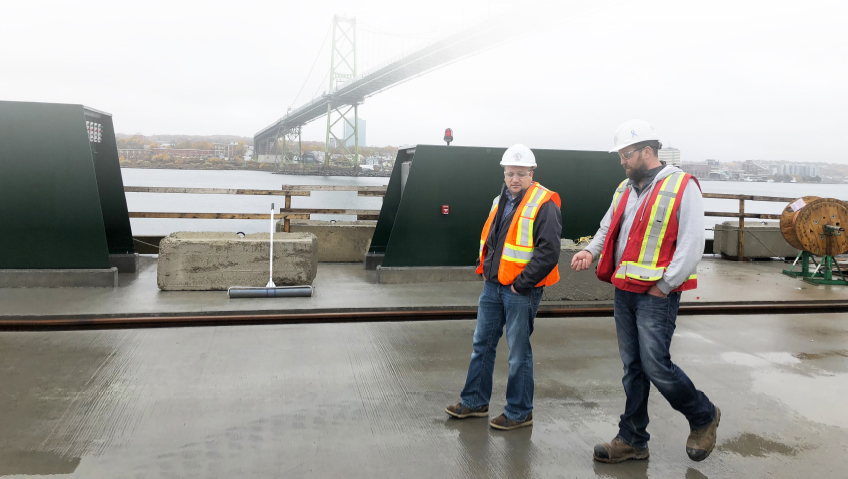It’s amazing how things are changing, including older technologies, social norms, and a few hidebound beliefs that together used to keep women out of construction. And it’s just as well, as the industry desperately needs an influx of more new talent or else face the risk of stagnation.
BuildForce Canada estimates that the construction industry will need to recruit 300,000 new employees over the next decade to satisfy demand. How? There’s an answer to this problem and it’s simpler than some people think – hire more women.
However, to set the industry on the right road, it’s clear that more needs to be done.
While the Institute for Women’s Policy Research found that the share of women working in construction trades is the highest it has been in two decades, it’s imperative that more women get out of predictable administrative support roles and into the field and senior leadership positions.
Women in construction: a snapshot
In 2019, women represented 13 percent of the construction workforce in Canada, although they made up only 4.7 percent of tradespeople. According to the U.S. Bureau of Labor Statistics women make up 46.8 percent of the overall workforce in the U.S. but only 10.9 percent of the construction industry, which is representative of only a fraction of the overall female workforce.
Similarly, when BigRentz, Inc. looked at Engineering News-Record’s surveys of the Top 100 Contracting Firms and Fortune 500 Companies, they found that women fill only one of every 100 frontline positions on job sites. Instead, women are primarily found in office or administrative positions, and only about 2.5 percent of all tradespeople in construction are women. Fourteen percent of all women in construction are staff executives, but only seven percent hold executive positions.
Levelset’s Survey of Women in Construction: 2021, conducted in February 2021, asked 1,001 women about their careers in construction and found that 81 percent of women worked for general contractors or subcontractors, 67 percent had been with their company for five years or less, and 33 percent are under the age of 44. Just under half had a bachelor’s degree or some form of higher education.
The survey also found that 70 percent of women worked for companies with fewer than 50 people, 65 percent worked for companies where one of ten employees are women, and 59 percent responded that they were employed with companies where women represented less than five percent of leadership roles.
Barriers to diversity
There are countless challenges faced by the construction industry, and not all of them are gender-based. These challenges can include slow payment, long, sometimes gruelling hours, dirty work environments, the physicality of the work, and inclement weather. Then, of course, there are some barriers women face that their male counterparts do not.
Barriers to women that persist in construction are negative perceptions and lack of respect, which are self-evidently linked to discrimination and harassment.
While 80 percent of women feel generally respected by coworkers, 65 percent believe that leadership gives more credence to male voices over theirs, meaning women have to go to greater lengths to prove themselves and their worth on projects.
Nevertheless, viewed as a generational issue, this situation generally continues to improve year-over-year.
Pay is another challenge, both from a pay gap standpoint and in terms of non-payment of contracts. Women typically earn less than their counterparts, and slow payments, while not a gender-specific issue, are more common in women-owned firms, even on government-run projects.
The industry can also be very isolating for women who may lack the mentorship of peers and enjoy fewer training opportunities. This can also lead to a greater risk of injury, a problem that is sometimes worsened by a lack of suitable personal protective equipment (PPE), which has traditionally been designed for their male counterparts.
Slow advancement is another challenge, as women are less likely to be promoted over male coworkers, though they are increasingly finding themselves in senior leadership roles.
When women are promoted, it can lead to a challenge of legitimacy, with male counterparts reluctant to accept their authority. Again, the result is that women have to work harder to earn their place and the respect of their peers.
Barriers as opportunities
Construction is no longer strictly a man’s work. As Debbie Dickinson, CEO of Crane Industry Services, says, “Once upon a time, men needed to do [construction] jobs because it took so much brute strength to do a lot of the work. Technology and the advancements in hydraulic equipment have made it possible for those jobs to no longer be gender-specific.”
Basically, Dickinson is saying something very welcome, that, “A woman’s place is wherever she wants it to be – even in the cab of a 40-ton bulldozer.”
Sometimes, what’s viewed as detrimental can also be an opportunity.
While discrimination and sexism are certainly barriers to be overturned, for some women the challenges that come with a career in construction are the most rewarding part of the job. In fact, there are countless reasons why women are drawn to careers in construction.
For the most part, women in construction view their peers as great people to work with and enjoy the team effort associated with the work and culture of a job site. There is a feeling that they are building community both in terms of the relationships on-site and the fulfilling work that they are a part of.
Women also enjoy the opportunity to learn new things, and the variety and stimulation of the day-to-day work, as construction projects are rarely dull. Careers in construction are exciting with constant new problems and challenges to surmount, people in front line jobs are rewarded with good pay (though pay disparities still exist) and construction staff see the fruits of their labour in a very satisfying and imposing form as projects near completion.
It is also important to note that women are detail-oriented and make the majority of design decisions when it comes to the built form of the home, so these voices must be not only represented but also amplified in the sector, to better meet the demands of the clients who are contracting the services in the first place.
Breaking new ground
Nearly 80 percent of women in the construction industry say they love their jobs, with 60 percent indicating that they see good opportunities for themselves and their peers.
Overcoming the scepticism that prevailed years ago, and still does in some cases, women in construction have shown they thrive when allowed to prove themselves. In so doing, they are overcoming the stereotypes that present as barriers to entry.
Further, there are a greater number of women assuming leadership roles in the industry. According to figures published by the National Association of Women in Construction (NAWIC), women represent ten percent of the industry overall, with positive growth in the representation of women-owned firms.
Approximately 13 percent of construction-related companies are said to be owned by women, which represents a 64 percent rate of growth from 2014 to 2019. In 2020, women launched four percent of new firms.
Of these firms, nine percent achieved revenues greater than $500,000, showing the power of women-owned firms in the sector and the correlation between gender diversity and profitability.
Women have also been promoted to senior leadership roles in around 75 percent of construction firms, indicating a recognition of the contributions of women to the performance of these companies.
Further to improved financial and technical performance, having a gender diverse workforce and senior leadership team contributes to improved overall work culture, and serves to advance the industry by introducing a greater number of peers and mentors that will encourage and lead the next generation of women in construction.
Supporting success
Given the positive impact women have on the industry, it is in the best interest of the sector and the economy in general to continue to seek ways to remove barriers to entry through improved recruitment and retention efforts.
One way to do so is to increase the visibility and representation of women in the industry. This is being achieved in several ways, including growth in paid or low-cost apprenticeship programs, as well as scholarship programs.
In 2019, Canada’s Building Trades Unions (CBTU) launched a new program to increase participation in the industry by 30 percent and the federal government invested $300 million toward launching new Offices to Advance Women Apprentices (OAWA) in several provinces.
There are also Apprenticeship Incentive Grants (AIG) for women in red seal trades to encourage their growth in the industry and to support recruitment, training, and apprenticeships.
There is also growth in the number of professional organizations and conferences geared specifically for women in construction such as the National Association of Women in Construction (NAWIC) and Women Construction Owners and Executives USA. This helps to increase visibility, encourage network building, and mentorship.
Another way to support women is to provide improved child-care options that enable them to achieve a work-life balance between the responsibilities of a career and their family, without having to choose one over the other. Whether in the home, on the job site, or in the boardroom, women continue to prove themselves and it is time to amplify their impact.
Economically empowering women does not only lead to sustainable development and economic growth, but it is also demonstrably good for business and profitability. This is especially important as the demand for skilled labour and trades is at an all-time high: women could help to satisfy this demand and take the industry to the next level.






